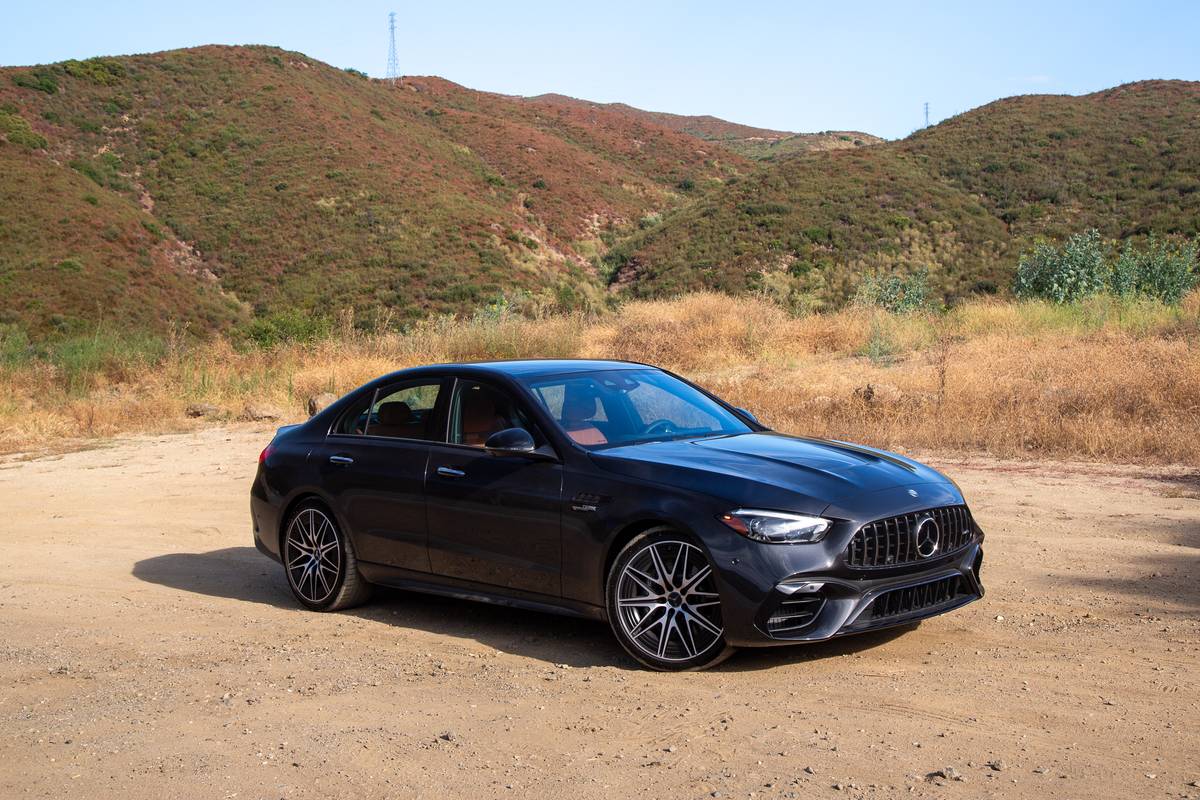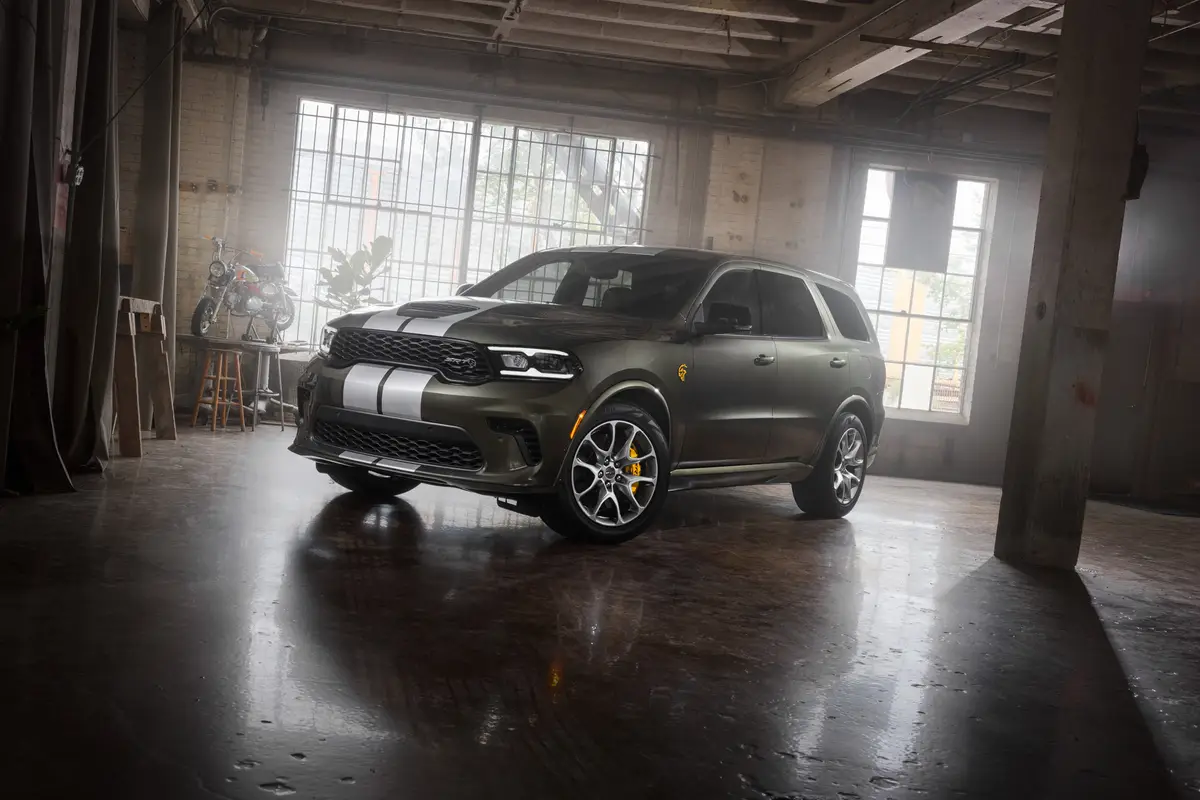Star-Telegram.com's view
The all-new, 2005 Toyota Avalon full-size sedan is here. A car that might well be considered a Japanese Buick, the Avalon enters its third generation with rather radical new body styling, more power, and a roomier interior. It went on sale in February, after having been formally introduced at the Detroit auto show in early January.
This essentially is a stretched version of the Camry sedan, although with its new styling, it looks nothing like the Camry. Instead, its exterior is very similar to that of the Toyota Camry Solara coupe and the slightly more-expensive Lexus GS sedans.
Toyota says the new styling of the Avalon expresses the company’s design theme for a range of new products, and that designers took special care to give the car a more-youthful look to help attract younger buyers to a car whose present clientele is approaching golden age.
Although Toyota says it doesn’t mind that the average age of Avalon buyers is about 60, the company hopes that the new model will continue to appeal to the 60-plus age group, plus attract 30-something professionals who prefer a nice sedan over an SUV or minivan.
The company’s challenge in redesigning the Avalon is one that Buick faced with the design of its new Lacrosse sedan, rolled out this past fall as the replacement for the similar Century and Regal models: How to design an exterior that doesn’t turn off the current, older owner body, yet appeals to younger consumers as well.
Buick hasn’t been able to do that in the past, and the jury is still out on the Lacrosse. Whether this new Avalon can pull that off also remains to be seen. I’ve already heard from several 60-plus owners of the previous generation of the Avalon who say they hate the new styling, and I have yet to hear of someone in his 30s putting the new Avalon on a must-see shopping list.
Frankly, the styling seems a bit odd, thanks to the fastback-style sloped rear window and tail end that make the car look something like a marlin (the fish) or a Marlin (the odd-looking American Motors car of the ’60s), yet with more-rounded edges.
What it doesn’t appear to have is the edgy, youthful styling that Toyota says it was looking for with the redesign of its flagship sedan.
The car’s styling, though, probably won’t be all that important as long as it doesn’t turn people off — particularly those who have been the most-loyal customers of this car. Toyota has never really needed edgy styling to sell cars — one look at the Camry, with its generic exterior, tells us that. It has been the best-selling car in the United States for the past three years, and either first or second place for most of the past decade.
Inside is probably where the Avalon truly shines, especially for those in the 60-plus age group who long for those roomy big sedans they grew up with. The car is quite roomy and comfortable, with lots of rear-seat leg room. Up front, though, there are two bucket seats separated by a center console; a three-person front bench seat is not offered. For some buyers in this age group, though, a front bench seat is a requirement. Here again, it’s what these consumers grew up with and are most comfortable buying. Toyota says only the bucket seats are offered (a bench was optional on the previous Avalon). The rear seat has great leg room, in keeping with the car’s EPA classification of “large” sedan, and there is a bench seat back there that is suitable for three adults.
Something else Toyota did for the Avalon — significantly increasing its power — might not be as important with the 60-plus consumer as it would be for those in the their 30s and 40s. At least one current Avalon owner already has complained to me that the increase in power wasn’t necessary, especially since the new 3.5-liter V-6 engine is designed for premium fuel, whereas the previous-generation Avalon used regular. In some parts of California, premium fuel already has passed the $3-a-gallon mark.
This new engine is rated at 280 horsepower, quite a jump from the 210 horsepower of the previous-generation’s 3.0-liter V-6. Maximum torque is 260 foot-pounds, up from 220 in the 2004 Avalon. The engine is linked to a new five-speed automatic transmission, the only gearbox offered.
Toyota says this engine can push the new Avalon from zero to 60 mph in 6.6 seconds, “while achieving an impressive” EPA fuel economy rating of 22 miles per gallon city/31 highway. That’s a slight improvement over the 21 city/29 highway ratings of the 2004 Avalon, but the ’04 model ran on regular gasoline.
The company says it doesn’t mind offering a vehicle that targets people whose average age is almost 60, thanks in part to the success of Toyota’s new youth-oriented Scion brand, which is bringing down the median age of Toyota buyers.
“We’re content with the mature age level of the Avalon buyer,” Toyota’s then-U.S. General Manager Don Esmond said during a media introduction of the car in November. He added that without Scion, Toyota might not have been as comfortable developing a new car intended for an older audience.
The Avalon was introduced in 1995 as a way for Toyota to reach some consumers who would otherwise turn to larger sedans from brands such as Buick and Oldsmobile. It is built at the Camry factory in Georgetown, Ky.
This newest model is being billed as the “most American Toyota yet,” based on its nearly all-U.S. development. It was styled at Toyota’s Calty Design Research center in Newport Beach, Calif., and engineered by the U.S.-based Toyota Technical Centers.
Four trim levels are offered: the base XL model, at $26,350 (plus $585 freight); the Touring version (our test car, with a base price of $28,600 plus freight); the even-better-equipped XLS, at $30,800 plus freight; and the top-of-the-line Limited, $33,540 plus freight. Prices of the XLS and Limited model are similar to or near those of several Lexus products, including the Camry-based ES 350 sedan and RX 350 sport utility, as well as the IS 300 and GS 300 sedans.
Having the Avalon push into Lexus price-territory might not be a conflict, however, since there are no Lexus sedans this large at prices in the $30,000s. The full-size Lexus LS 430, which is even a bit larger than the Avalon, starts at $56,000.
Even the base model Avalon is rather well-equipped. Standard features include an AM/FM/cassette/CD stereo system with nine speakers, dual-zone automatic climate control with air filtration, remote keyless entry, power door locks with anti-lockout feature, power windows with driver and passenger auto up/down with jam protection and retained power, fabric front bucket seats, multi-adjustable power front driver’s seat, and center console storage.
Besides the features that come with the XL, our Touring model also got leather seats, leather-wrapped steering wheel and shift knob, aluminum door scuff plates, and a rear spoiler. Other upgrades included a more firmly tuned suspension, stiffer springs, and 17-inch aluminum-alloy wheels with graphite finish.
Moving up to the third level, the XLS adds a power moon roof, four-way adjustable power passenger seat, in-dash six-disc CD changer, dual heated outside mirrors with auto-dimming on the driver’s side, auto-dimming inside mirror with compass, aluminum door scuff plates, and an antitheft system.
The Limited model comes with such extras as a 360-watt JBL Synthesis audio system with six-disc CD changer and 12-speakers; one-touch, auto-reverse power rear sunshade; driver and front-passenger heated seat with fan; memory driver’s seat with power cushion-length adjuster; and the keyless ignition system.
Our Touring test model came with a couple of options: a power moon roof with sliding sunshade ($910), which was installed at the factory; and a carpeted floor-mate set ($199), which came from the distributor. Total sticker on our car was $30,294, including freight.
The stiffer suspension gives the Touring model better roadhandling, especially on Hill Country curves, but like a cushy Buick, the Avalon is more about ride comfort than sporty handling. Still, I found the handling to be better than that of the average American family sedan, and the power was quite impressive.
As for the premium-fuel issue, the higher-octane gasoline is recommended for the best engine performance. But the car will run fine on regular gas, and I expect that some consumers will choose to fill the tank with regular on a routine basis.
The tank holds 18.5 gallons of fuel.
G. Chambers Williams III is staff automotive columnist for the San Antonio Express-News and former transportation writer for the Star-Telegram. His automotive columns have appeared regularly in the Star-Telegram since 1995. Contact him at (210) 250-3236; chambers@star-telegram.com.
————————
At a Glance 2005 Toyota Avalon
The package: Full-size, four-door, four-passenger, front-wheel-drive, V-6 powered sedan.
Highlights: All new for 2005, this is Toyota’s flagship sedan, build on an extended Camry chassis and designed for buyers with a median age of just under 60. It comes with significantly different exterior styling, a comfortable and roomy interior, and much more power than before.
Negatives: Gets as pricey as some Lexus models; engine is designed for more-expensive premium fuel.
Engine: 3.5-liter V-6.
Transmission: Five-speed automatic.
Power/torque: 280 hp./260 foot-pounds.
Length: 197.2 inches.
Curb weight: 3,490-3,600 pounds.
Brakes, front/rear: Disc/disc, antilock.
Trunk capacity: 14.4 cubic feet.
EPA fuel economy: 22 miles per gallon city/31 highway.
Fuel capacity/type: 18.5 gallons/unleaded premium recommended.
Major competitors: Chrysler 300, Ford Five Hundred/Mercury Montego, Pontiac Grand Prix, Pontiac Bonneville, Buick Lacrosse, Buick LeSabre, Kia Amanti, Nissan Maxima.
Base price range: $26,350-$33,540 plus $585 freight.
Price as tested: $30,294 including freight and options (Touring model with moon roof).
On the Road rating: ****-1/2 (four-and-a-half stars out of five).
Prices shown are manufacturer’s suggested retail; actual selling price may vary according to applicable rebates, discounts and incentives, if any.
Latest news



